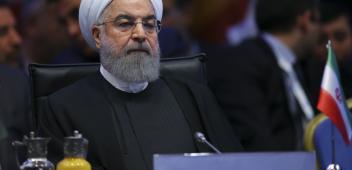Israel's military operations will deal a huge blow to Hamas. But is it even possible to completely destroy them?
Originally published in ABC News, 7 November 2023.

The Israel Defence Forces (IDF) last Friday completed an important component of its operation in Gaza.
An armoured thrust across the middle of Gaza reached the sea. This has the effect of isolating northern Gaza from the rest of the territory. But it also heralds a new phase in the ongoing Israeli military action, Operation Swords of Iron.
The IDF now occupies a large section of middle Gaza and appears set to stay for some time. Open-source intelligence indicates that Israel has rapidly constructed a string of strong points across the trunk of Gaza. These strong points, constructed by the armoured bulldozers, will form a cordon that has several purposes in the next phase of Israel's Gaza operation.
One reason for isolating northern Gaza is to ensure Hamas is cut off from external sources of support. The cordon will prevent support from southern Gaza moving north to Hamas terrorists. But it will also allow civilians to escape the combat occurring to the north, while preventing Hamas from fleeing south.
While Israeli forces are manning this southern cordon, a large ground force has been advancing on two major axes – from the north and the north east – into Gaza City.
The aim of this is to continue squeezing Hamas, forcing them into a smaller and smaller area where they can be detected and destroyed. The IDF will also be seeking to find Hamas infrastructure in northern Gaza, including confirming the locations of the extensive underground network used to move fighters and store weapons. At the same time the IDF will desperately be seeking hostages that might be held in northern Gaza.
These operations will involve armoured ground forces, crewed and uncrewed aircraft as well as electronic reconnaissance and human intelligence operations.
The deaths of civilians and hostages may be hard to avoid
The mission to destroy Hamas and the mission to retrieve hostages however will be difficult to reconcile. Given the amount of destruction involved in engaging and killing Hamas fighters, it is difficult to avoid civilian casualties or the potential deaths of hostages.
The Israeli operations in Gaza are likely to take some time — possibly weeks or months. The intensity of fighting will increase, and the casualty count for IDF soldiers, Hamas militants and civilians is likely to rise.
During this time Israel will need to balance military missions, avoiding civilian casualties, recovering hostages and keeping an eye on the inevitable strategic clock that is ticking.
Can Hamas be destroyed?
An important issue for the Gaza operation is whether it is actually possible to destroy Hamas.
Certainly, the IDF operations will deal a lethal blow to Hamas, kill many of its followers and destroy its infrastructure. But, like all wars, more than military operations are needed to achieve long term, stable political solutions. Military operations can only be successful if they are conducted in support of political objectives.
To "destroy" Hamas will require severing the support it receives from organisations such as Hezbollah, and from Iran. But it will also require a long-term political and social remedies that eliminate the reasons why young men in Gaza feel a need to join organisations like Hamas.
Hamas's purpose and ideas would need to be made irrelevant to the people of Gaza.
Without these issues being addressed, the current Israeli operations are at risk of just being a more violent form of Israel's "mowing the grass" strategy for Gaza that preceded October 7.
After Gaza, what comes next?
A final question is this: after northern Gaza, what comes next?
The government of Israel has several options. It could withdraw its forces and continue a lower intensity operation to destroy Hamas infrastructure and hunt down those who participated in the October 7 atrocities. Alternatively, it could use northern Gaza as a launch point for an advance into southern Gaza.
But the government of Israel will understand that, despite its desire to destroy Hamas in all of Gaza, its allies only have limited strategic endurance for supporting this. The US government, despite its support for Israel, has been signalling its dissatisfaction with the level of civilian casualties in the past two weeks.
After nine days of Israeli operations in Gaza in 2021, US President Biden informed Israeli Prime Minister Benjamin Netanyahu that he "was out of runway" and a ceasefire was declared two days later. While the Israelis may have more latitude this time because of the magnitude of the October attacks, the strategic clock is still ticking.
As such, Israel has prioritised northern Gaza and will reassess whether it has the strategic flexibility for further operations once this operation is complete.
Regardless, there will be a lot of brutal and bloody fighting ahead on the ground — and under the ground — in the coming weeks. The casualties on all sides will mount. And the vicious information war that rages around the world will continue to put pressure on Israel to moderate the violence.
But given Netanyahu's determination to see this Gaza operation through to the end, a reduction in violence is unlikely in the very near future.
Mick Ryan is a strategist and retired Australian Army major general. He served in East Timor, Iraq and Afghanistan, and as a strategist on the United States Joint Chiefs of Staff. He is also a non-resident fellow of the Lowy Institute and at the Washington-based Centre for Strategic and International Studies.


